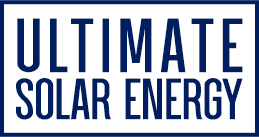Economic Response Of Australian Government To The CORONAVIRUS
Delivering support for business investment in Australia:
Australian Government is encouraging businesses to help the economy withstand by investing and recover from the economic impact of the outbreak of Coronavirus. The two business investment measures in this package are designed to assist economic growth and Australian businesses in the short-term, and encourage a stronger economic recovery after the Coronavirus outbreak.
These measures will help over 99 per cent of businesses and will support over 3.5 million businesses employing more than 9.7 million employees with aggregated annual turnover of less than $500 million.
INCREASING THE INSTANT ASSET WRITE-OFF Summary
The instant asset write-off (IAWO) threshold is increased by the government from $30,000 to $150,000 and until 30 June 2020 they are expanding access to include all businesses with aggregated annual turnover of less than $500 million (up from $50 million).
From the current IAWO in 2017-18 there were more than 360,000 businesses that benefited, claiming deductions to the value of more than $4 billion. The higher IAWO threshold provides cash flow benefits for businesses that will be able to immediately deduct purchases of each eligible assets costing less than $150,000.
The eligible businesses can immediately write-off multiple assets as threshold applies on a per asset basis. The IAWO is due to revert to $1,000 for small businesses (turnover less than $10 million) from 1 July 2020.
Eligibility:
The Government is expanding access so that more businesses can take advantage of the IAWO.
The annual turnover threshold for businesses is increasing from $50 million to $500 million. Employees in large numbers around 1.9 million Australians will be able to access the IAWO for the first time as Expanding the threshold will mean an additional 5,300 businesses.
Timing:
This proposal applies from announcement until 30 June 2020, for second-hand or new assets first used or installed ready for use in this timeframe.
Budget impact:
This measure is expected to have a net cost of $700 million estimated. It is estimated to lower taxes paid by Australian businesses by $2.5 billion and will support business investment over the next two years.
Example 1 — Business benefits from increased asset threshold:
ON Point Farms Pty Ltd Owen owns a company, through which he operates a farming business in the Central Wheat Belt of Western Australia. ON Point Farms Pty Ltd for the 2019-20 income year has an aggregated annual turnover of $25 million.
Owen purchases a second hand tractor for use in his business, for $140,000 on 1 May 2020 exclusive of GST.
ON Point Farms Pty Ltd under existing tax arrangements is not able to immediately deduct assets costing more than $30,000 and instead would depreciate the tractor using an effective life of 12 years.
Choosing to use the diminishing value method, it would claim a tax deduction of $3,899 for the income year 2019-20.
ON Point Farms Pty Ltd under the new $150,000 instant asset write-off,would instead claim an immediate deduction of an amount of $140,000 for the purchase of the tractor in the 2019-20 income year, $136,101 more than under existing arrangements. At the company tax rate of 27.5 per cent, Owen will pay $37,427.78 less tax in 2019-20.
This will help his business withstand and recover from the economic impact of the Coronavirus and improve ON Point Farms Pty Ltd’s cash flow.

Example 2 – Business benefits from increased turnover threshold:
Samantha owns a company in Brisbane named Sam’s Specialty Roasters Pty Ltd, through which she operates a large food processing business.
The company has an aggregated annual turnover of a figure $150 million for the 2019-20 income year.
Samantha purchases five new conveyor belts On 1 May 2020, for her production facility each for $40,000 , exclusive of General Sales Tax, for use in her business. Sam’s Specialty Roasters Pty Ltd under existing tax arrangements, is not eligible for the instant asset write-off and instead would depreciate the conveyor belts using an effective life of 15 years. Sam’s Specialty Roasters Pty Ltd choosing to use the diminishing value method would claim a total tax deduction of $4,456 for the 2019-20 income year.
Under the new $150,000 instant asset write-off, the company would instead claim an immediate deduction of $200,000 in the 2019-20 income year for the purchase of the conveyor belts (i.e. $40,000 for each conveyor), $195,544 more than under existing arrangements.
At the company tax rate in the 2019-20 income year, $195,544 more than under existing arrangements. Samantha will pay $58,663.20 less tax at the company tax rate of 30 per cent in 2019-20. This will help her business withstand and improve Sam’s Specialty Roasters Pty Ltd’s cash flow and recover from the economic impact of the Coronavirus.
3 -BACKING BUSINESS INVESTMENT (BBI) Summary:
In order to support business investment and economic growth over the short-term the Government is introducing a time limited 15 month investment incentive, by accelerating depreciation deductions.
The key features of the incentive are:
• benefit — one benefit of the incentive is the deduction of 50 per cent of the cost of an eligible asset on installation, with existing depreciation rules applying to the balance of the asset’s cost;
• eligible businesses — businesses with aggregated turnover below $500 million;
• eligible assets — new assets that can be depreciated under Division 40 of the Income Tax Assessment Act 1997 (i.e. specified intangible assets , such as patents and plant, equipment) acquired after announcement and first installed or used by 30 June 2021.
Does not apply to second-hand Division 40 buildings or assets, and other capital works depreciable under Division 43.
Eligibility Businesses with aggregated turnover below $500 million, purchasing certain new depreciable assets. Timing Applies to eligible assets acquired after announcement and first installed or used by 30 June 2021.
Budget impact: This measure is expected to have a cost estimation of $3.2 billion over the forward estimates. It is estimated to lower taxes paid by Australian businesses by $6.7 billion and will support business investment over the next two years.
The benefits and Key incentives impacting solar installers at a glance:
- A massive $17.6 billion economic plan impact on the solar industry.
- 50% bonus depreciation in year 1.
- instant write off raised from $30,000 to $150,000 for companies under $500 million turnover.
- 50% of the salary of apprentices paid into your bank account.
- 50% of BAS statement paid directly into your business account.
- Up to $70,000 ‘in the bank’ for your customers to install solar.
After evaluation in terms of selling solar of the stimulus package, this is how we see it;
- Assume a $150,000 100kW solar package after STCs ($165,000 with GST)
- Instant tax write off of $150,000
- 50% bonus tax write off in the year of commissioning = $75,000
- GST rebate of $15,000
- Electricity savings (in Victoria) of $32,500 (100kW x 3.6 x365 and 25 cent peak tariff
- Assuming a tax rate of 27%, this is a total cash improvement of $108,250 in year 1 on an investment of $150,000 ex-GST.
- In this low-interest environment for most businesses, they will not need any cash to make this happen.
Assuming after payments in year 1, a chattel mortgage for $150,000 ex-GST which will leave about $70,000 in the pocket of the commercial buyer!
No cash required No financials required – just $70,000 in the bank in year 1.
For your client to apply for ‘no financials required’ green loans up to $150,000 click on this link.

